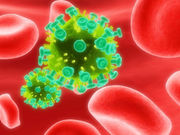Skin biopsies show moderate to extensive infiltrate; quantity of treponemes linked to CD4 count
MONDAY, June 27, 2016 (HealthDay News) — Skin biopsies from patients co-infected with HIV and syphilis have moderate to extensive lymphoplasmacytic infiltrate, according to research published online June 14 in the Journal of Cutaneous Pathology.
Gabriela Rosa, M.D., from the Cleveland Clinic, and colleagues examined the histopathologic findings in skin biopsies from patients co-infected with HIV and syphilis. Skin biopsies were identified for 14 patients (12 men), aged 25 to 51 years, with serologic evidence of syphilis at the time of biopsy. Ten of these patients had serologic and/or virologic evidence of HIV infection.
The researchers found that a moderate to extensive lymphoplasmacytic infiltrate was identified in all cases. The predominant inflammatory cells were lymphocytes and plasma cells. There was a correlation between the treponeme counts, detected by Treponema pallidum immunohistochemistry, and patient CD4 counts; biopsies containing >100 treponemes in 10 high-power fields were seen in patients with CD4 counts <250 cells/mL. Patients with low CD4 counts had a significantly higher mean level of spirochetes compared to patients with CD4 counts of 250 cells/mL or higher (P = 0.03).
“The most consistent histopathologic finding in these patients with HIV and syphilis was a moderate to extensive lymphoplasmacytic infiltrate,” the authors write. “Even in immunocompromised patients with very low CD4 T-cell counts, a moderate to robust inflammatory response was present on skin biopsy.”
Full Text (subscription or payment may be required)
Copyright © 2016 HealthDay. All rights reserved.








